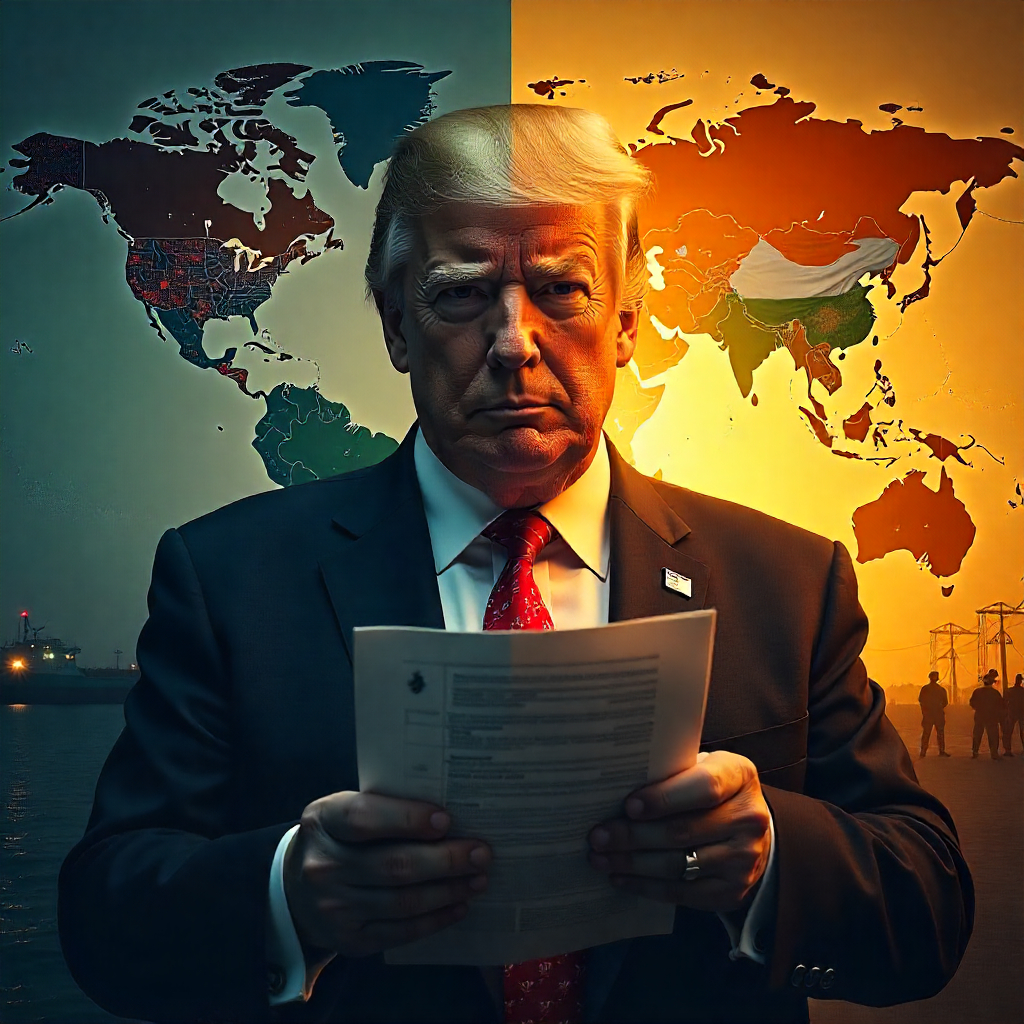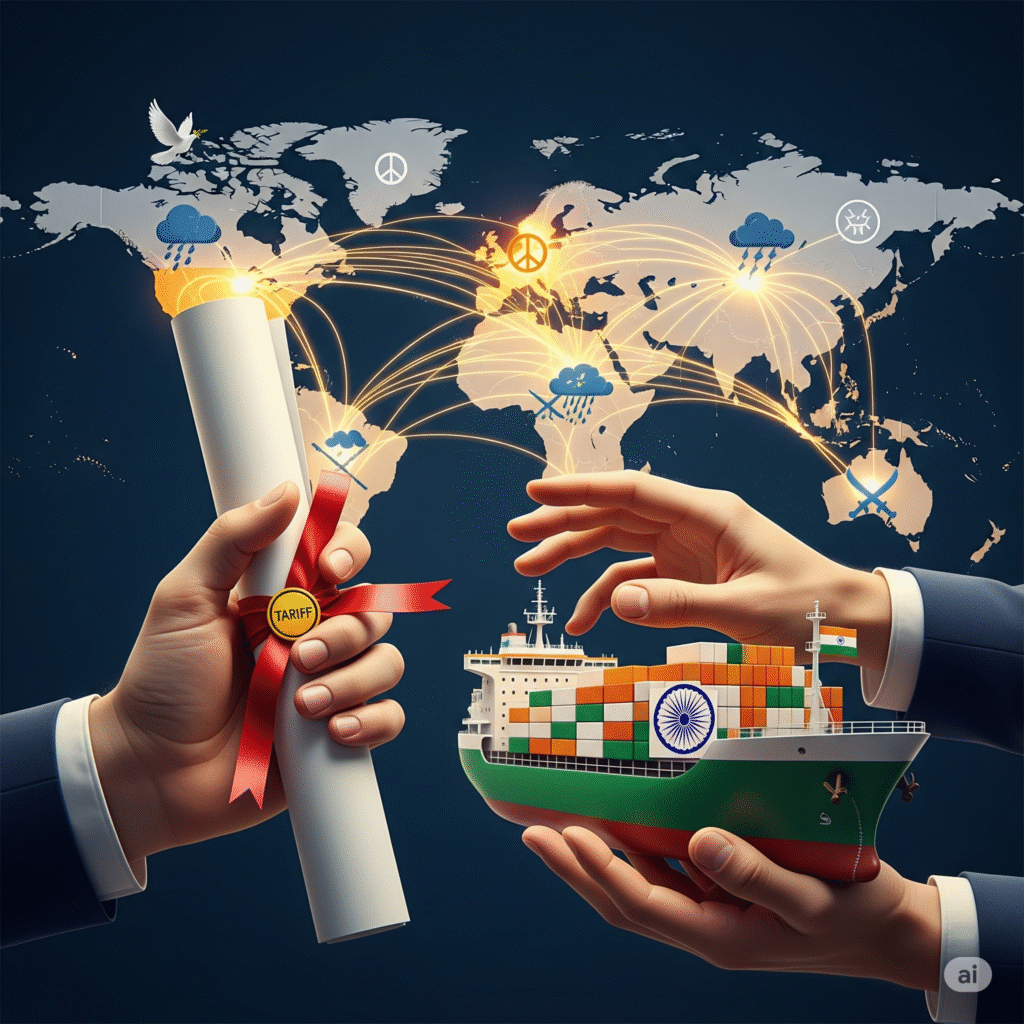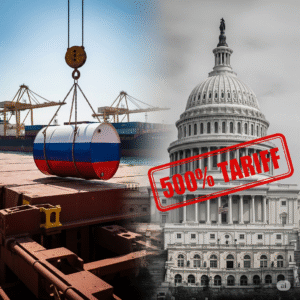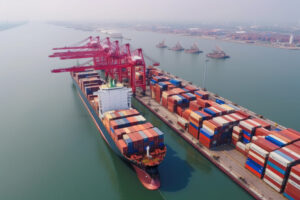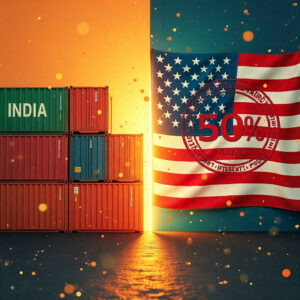Introduction
In August 2025, U.S.–India relations took a dramatic turn when President Donald Trump announced sweeping new tariffs on Indian imports. With one stroke, duties on Indian goods to the U.S. doubled to 50%. Trump justified the move on two fronts: India’s “unfair trade practices” and its continued purchases of Russian oil.
As Al Jazeera reported, “Trump imposed a new 25 percent tariff on Indian goods, citing New Delhi’s purchases of Russian crude oil as a direct subsidy to Moscow’s war machine” (Al Jazeera).
At the same time, the Trump administration has been deeply engaged in peace negotiations between Russia and Ukraine, most recently through a high-stakes summit in Alaska with Vladimir Putin. This juxtaposition of tariffs and diplomacy highlights the strange interconnectedness of modern geopolitics, where trade battles and peace deals often run in parallel.
This blog unpacks the reasons behind the tariffs, their likely impact, and how they intersect with Trump’s controversial peace talks.
Section 1: The New Tariffs – A Closer Look at the “Why”
The Main Tariff
Trump first reinstated broad tariffs, placing a 25% duty on all Indian imports. This came on top of existing levies from his earlier trade policies.
The “Reciprocal” Rationale
The Trump administration argued the tariffs were about fairness. India, Trump said, has been the “tariff king” for years—a term he has used since his first presidency. According to The Economic Times, “Trump’s officials highlighted high Indian barriers on U.S. agriculture and dairy as a justification for the move” (Economic Times).
The Geopolitical Tariff
The second 25% levy was explicitly linked to India’s oil imports from Russia. Trump told reporters in Washington that “Every barrel of oil India buys from Russia helps fuel Putin’s war machine” (BBC).
Connecting the Dots
In other words, the tariff wasn’t just about trade—it was about geopolitics. By penalizing India, Washington sought to cut off a critical revenue source for Russia, while simultaneously pushing New Delhi closer to the U.S. side of the Ukraine war.
